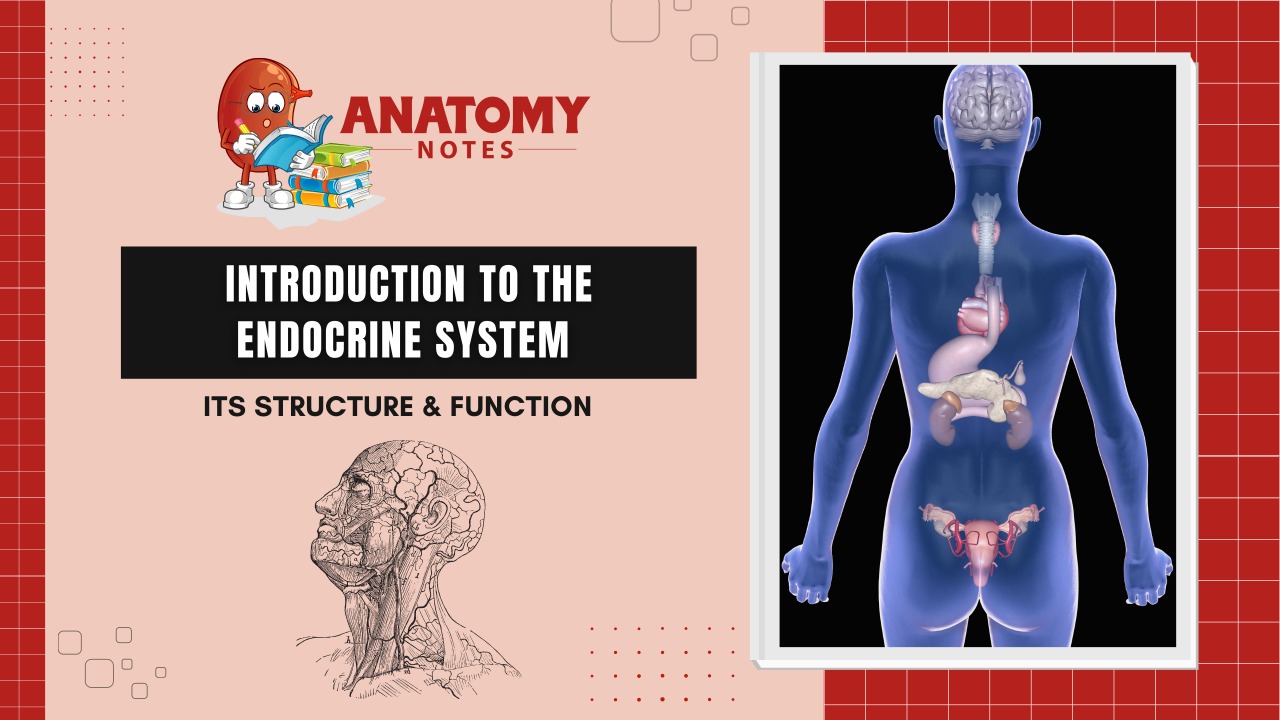The endocrine system helps to perform several body processes by the function of hormones including respiration, metabolism, sexual development, movement, sensory perception, reproduction, growth, etc.”Endo” means “inside” and “crine” means” to secrete “
The fundamental functions of the endocrine system are long-distance intercellular communication, coordination, and maintain hemostasis.
A hormone is formed in one organ or gland and carried in the blood to another target organ or tissue, where it affects cellular activity, especially growth and metabolism.
Most hormones are synthesized from amino acids (amines, polypeptides, and proteins) or are cholesterol-based lipids.
Endocrine signaling
The endocrine system uses chemical signaling as a method of communication. Endocrine organ sent the chemical signal which secretes hormones or chemical into the extracellular fluid.
Hormones transported throughout the body via bloodstreams where they bind to receptors on target cells and develop a characteristics response.
So, endocrine signaling requires more time to prompt a response in target cells, though the precise amount of time varies with different hormones.
For example, the hormones released when you are confronted with a dangerous or frightening situation, called the fight-or-flight response, occur by the release of adrenal hormones—epinephrine and norepinephrine—within seconds.
Also Read: Cardiovascular system – Complete story of the heart & blood circulation
Cardiovascular system – Complete story of the heart & blood circulation
In contrast, it may take up to 48 hours for target cells to respond to a certain reproductive hormone.
The endocrine signaling is typically less specific than. The same hormone may play a role in a variety of different physiological processes depending on the target cells involved.
For example, the hormone oxytocin promotes uterine contractions during labor pain.
It also plays an important role important in breastfeeding and may be involved in the sexual response and in feelings of emotional attachment in both males and females.
Structure Of The Endocrine System
The endocrine system consists of glands widely separated from each other with no direct anatomical links.
It also consists of the number of cells, tissue, and organs that secrete hormones. Endocrine glands are ductless glands as the hormones directly secreted and diffuse into the bloodstream.
The endocrine system consists of a number of distinct glands and some tissues in other organs. Although the hypothalamus is classified as a part of the brain and not as an endocrine gland it controls the pituitary gland and has an indirect effect on many others. The endocrine glands are:-
- 1 Pituitary gland- Master gland of the body, It has two lobes, Present at the base of the brain in the form of a protrusion, Secretes 9 different major hormones
- 1 Thyroid gland- One of the largest glands of the body, Found in the neck below the thyroid cartilage, Mainly controls body metabolism, Secretes 3 different hormones
- 4 Parathyroid glands- Four in number, located behind the thyroid gland, produce parathormone
- 2 Adrenal (suprarenal) glands- Found attached to the kidneys, Consists of two parts; Cortex and Medulla, Adrenal cortex produces 3 different hormones and adrenal medulla produces 4 different hormones
- The pancreatic islets (islets of Langerhans)- Primarily an organ of the digestive system, produces 4 different hormones including Insulin and Glucagon
- 1 Pineal gland
- 1 Thymus gland
- 2 Ovaries in the female
- 2 Testes in the male.
The ovaries and the testes secrete hormones associated with the reproductive system after puberty.
Functions of the endocrine system:-
- It secretes the hormones which play an important role to control growth and development, metabolism, organs, and reproduction in the human body
- It also controls the level of hormones in the human body.
- And homeostasis is also partly maintained by the endocrine system.
Frequently Asked Questions (FAQs)
What are the three primary components that constitute the endocrine system?
There are three primary components that constitute the endocrine system.:
- Glands: These are specialized organs that produce and secrete hormones directly into the bloodstream. Some instances of endocrine glands are the pituitary gland, adrenal gland, and thyroid gland.
- Hormones: These are chemical messengers produced by the glands that regulate various bodily functions, including growth, metabolism, and reproduction.
- Receptors: These are proteins located on the surface of cells throughout the body that bind to hormones and initiate a response within the cell. The response can be either activation or inhibition of cellular processes depending on the hormone and receptor type.
What is the function of endocrine system?
The endocrine system plays a crucial role in regulating various bodily functions and maintaining homeostasis (internal balance) in the body. Its main function is to produce and secrete hormones that act as chemical messengers to communicate with different parts of the body, including organs, tissues, and cells.
What system controls endocrine system?
The endocrine system is regulated and controlled by the nervous system, particularly the hypothalamus and the pituitary gland in the brain. The hypothalamus is responsible for producing and releasing hormones that control the pituitary gland, which in turn releases hormones that regulate the activity of other glands in the endocrine system.
What are the organs of endocrine system?
The organs of the endocrine system are a collection of glands and tissues that produce and secrete hormones into the bloodstream to regulate bodily functions. The primary components of the endocrine system are comprised of:
- Pituitary gland: Located at the base of the brain, it produces and secretes hormones that regulate growth, metabolism, and reproduction.
- Thyroid gland: Located in the neck, it produces and secretes hormones that regulate metabolism and growth.
- Parathyroid glands: Four small glands located near the thyroid gland, they produce and secrete hormones that regulate calcium levels in the body.
- Adrenal glands: Located on top of the kidneys, they produce and secrete hormones that regulate the body’s response to stress and control salt and water balance.
- Pancreas: Located behind the stomach, it produces and secretes hormones that regulate blood sugar levels.
- Gonads: The testes in males and ovaries in females produce and secrete hormones that regulate reproductive functions.
- Pineal gland: Located in the brain, it produces and secretes hormones that regulate sleep and circadian rhythm.
- Thymus: Located in the chest, it produces and secretes hormones that help develop and maintain the immune system.
- Hypothalamus: A part of the brain, it produces and releases hormones that regulate the pituitary gland and other endocrine organs.
Which is the smallest endocrine gland?
The pineal gland is the smallest endocrine gland in humans, typically measuring only a few millimeters in length and width. It is located in the center of the brain and secretes the hormone melatonin, which plays a role in regulating the sleep-wake cycle and other circadian rhythms in the body. While small in size, the pineal gland is considered an important endocrine gland due to its role in the production and regulation of hormones that are critical for maintaining healthy bodily functions.
What is the largest endocrine gland?
The largest endocrine gland in humans is the thyroid gland, which is located in the neck and wraps around the front of the windpipe. The thyroid gland produces and secretes hormones, primarily thyroxine (T4) and triiodothyronine (T3), which regulate metabolism, growth, and development throughout the body.





Wonderful. Thank you for a simple explanation of a complex system.
🙂
Christina